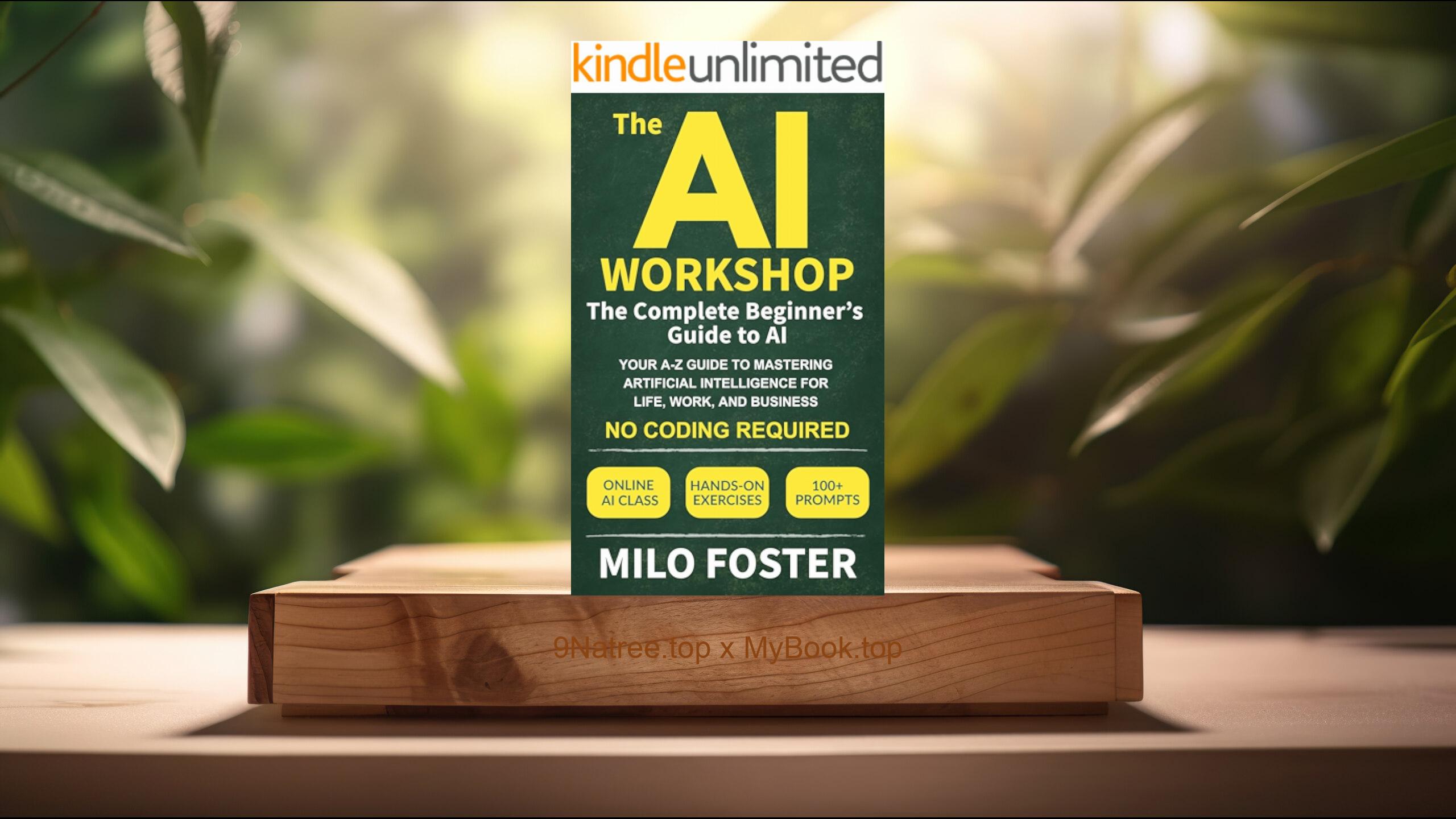Show Notes
- Amazon USA Store: https://www.amazon.com/dp/B0F2GVNFTJ?tag=9natree-20
- Amazon Worldwide Store: https://global.buys.trade/Agentic-Artificial-Intelligence-Pascal-Bornet.html
- Apple Books: https://books.apple.com/us/audiobook/agentic-artificial-intelligence-harnessing-ai-agents/id1802918706?itsct=books_box_link&itscg=30200&ls=1&at=1001l3bAw&ct=9natree
- eBay: https://www.ebay.com/sch/i.html?_nkw=Agentic+Artificial+Intelligence+Pascal+Bornet+&mkcid=1&mkrid=711-53200-19255-0&siteid=0&campid=5339060787&customid=9natree&toolid=10001&mkevt=1
- Read more: https://mybook.top/read/B0F2GVNFTJ/
#agenticAI #AIagents #enterpriseautomation #AIgovernance #futureofwork #AgenticArtificialIntelligence
These are takeaways from this book.
Firstly, From predictive models to autonomous agents, The book draws a sharp distinction between traditional AI that predicts or classifies and agentic AI that can decide, act, and improve through feedback. An agent combines perception, reasoning, planning, tool use, and memory to pursue goals within constraints. It can break a high level objective into tasks, call external tools or APIs, verify results, and adapt based on outcomes. The author explains core capabilities such as reflection loops, long term and episodic memory, and multi agent collaboration where specialized agents negotiate or hand off work. Practical scenarios include self service customer support that resolves issues end to end, financial reconciliation that queries systems and documents, and marketing agents that research, generate, and test content. By framing agents as goal driven systems with measurable outputs and guardrails, the book shifts attention from model accuracy to business impact, reliability, and safety. Readers come away with a mental model that clarifies what agents are, what they are not, and when they add outsized value.
Secondly, Architectures, tools, and patterns that make agents work, Bornet maps the technical building blocks that enable robust agents. He describes how large language models serve as planners and controllers, while tool adapters execute actions like database queries, search, code execution, or workflow automation. The book covers retrieval augmented generation to ground agents in enterprise knowledge, vector stores and knowledge graphs for memory, and orchestration frameworks such as LangChain, LangGraph, AutoGen, and function calling. Readers learn patterns like plan and execute, ReAct style reasoning, and multi agent swarms with a supervisor agent. The author addresses evaluation with automatic tests, synthetic scenarios, and human review, alongside observability for prompts, tool calls, and outcomes. He highlights latency, cost, and reliability trade offs, and how to use caching, batching, and fallbacks. Architecture blueprints show where to place gateways, policy engines, and monitoring to achieve scalability and compliance. This chapter level guidance helps teams choose the right stack while avoiding brittle solutions that fail under real world conditions.
Thirdly, Enterprise transformation playbook and value realization, The book provides a step by step method to identify high value use cases, prioritize by feasibility and impact, and deliver pilots that prove measurable outcomes. Readers learn to map processes, define target outcomes and success metrics, and design human in the loop checkpoints. The author details how to build a backlog of tasks for agents, craft robust system prompts and tool schemas, and set acceptance criteria tied to business goals such as cycle time, cost per transaction, error rate, and customer satisfaction. A scaling plan covers security reviews, data integration, change management, and training. The playbook emphasizes cross functional teams that include domain experts, engineers, designers, and risk leaders. It also covers investment cases, value tracking dashboards, and staged rollouts from proof of concept to production. By focusing on measurable ROI and adoption, the framework helps organizations avoid pilot purgatory and turn agentic AI into durable operational advantage rather than isolated demos.
Fourthly, Governance, safety, and responsible deployment, Agentic systems introduce new risks because they act, not only predict. Bornet presents a comprehensive governance model that blends policy, controls, and continuous monitoring. The book explains guardrails such as role and scope limits, allow and deny tool lists, approval gates for sensitive actions, and real time toxicity and data leakage filters. It discusses privacy by design, data minimization, and secure handling of credentials and secrets. Compliance guidance spans audit logging, model and data provenance, incident response, and alignment with regulations like GDPR and industry standards. The author shows how to conduct red teaming, adversarial testing, bias checks, and safety scoring, and how to use sandbox environments before production exposure. A risk heat map links use cases to potential harms and mitigation tactics. With clear ownership models and escalation paths, the governance approach balances innovation with accountability, giving leaders and regulators confidence that agentic AI can be both powerful and safe.
Lastly, Future of work, skills, and human agent collaboration, Beyond technology, the book explores how agents reshape roles, teams, and careers. The author argues for augmentation first, where humans focus on judgment, creativity, empathy, and oversight while agents handle research, coordination, and repetitive tasks. New roles emerge, including agent product owner, AI risk lead, conversation designer, and agent operations specialist. The book offers guidance on workflow redesign, task decomposition, and interface patterns that keep humans informed and in control. Upskilling paths include prompt and instruction design, data literacy, and tool orchestration. Leaders learn how to set expectations, adapt incentives, and measure performance when output is a blend of human and agent work. Case studies show how small teams can 10x throughput with quality gates and post action reviews. The future of work section frames agentic AI as collaborative intelligence, where trust, transparency, and purpose drive adoption and unlock sustainable productivity gains across knowledge and operational functions.
![[Review] Agentic Artificial Intelligence (Pascal Bornet) Summarized](https://episodes.castos.com/660078c6833215-59505987/images/2215497/c1a-085k3-qdv021k5bz92-y8qort.jpg)




